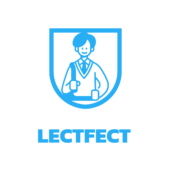In today’s fast-paced world, staying ahead of the curve isn’t just a luxury—it’s a necessity. Professional development isn’t just about attending boring seminars or reading dusty old books. It’s about unlocking potential, discovering new skills, and maybe even having a little fun along the way. After all, who said learning can’t be entertaining?
Imagine turning your coffee breaks into brainstorming sessions, or swapping out your usual lunch routine for a networking feast with industry experts. Professional development can be as exciting as a rollercoaster ride—if you know where to look. With a sprinkle of creativity and a dash of humor, anyone can transform their career trajectory while enjoying the process. Dive in to explore fresh ideas that’ll not only boost skills but also put a smile on that serious face.
Professional Development Ideas
Professional development fosters growth and adaptability in individuals within their careers. Organizations benefit from investing in employee development, as it leads to enhanced skills and increased productivity. Engaging in continuous learning allows professionals to stay updated with industry trends and technologies.
Innovative approaches to learning facilitate collaboration among team members, creating a supportive work environment. Networking opportunities during informal gatherings, like lunch breaks, can lead to valuable professional relationships. Creative learning methods, such as workshops or online courses, encourage employees to explore new concepts actively.
Data from the Association for Talent Development shows that companies with strong learning cultures experience 30 to 50% higher employee retention rates. Increased retention not only saves recruitment costs but also builds a more skilled workforce. Furthermore, skill enhancement leads to higher job satisfaction and morale among employees, which translates into better performance.
Incorporating humor and creativity into learning processes can make development experiences more enjoyable. Employees who find pleasure in their professional growth are more likely to pursue new challenges. Daily routines, when integrated with learning opportunities, can transform mundane activities into enriching experiences.
Engagement in professional development contributes to long-term career advancement. It empowers individuals to take ownership of their career paths while aligning personal goals with organizational objectives. In a competitive job market, prioritizing professional development ensures that individuals remain relevant and valuable assets to their companies.
Types Of Professional Development Ideas

Various options exist for enhancing professional growth and development. Engaging in these activities can lead to skill improvement and career advancement.
Workshops And Seminars
Workshops and seminars offer interactive learning opportunities. Participants gain hands-on experience and can collaborate with peers. Industry experts often lead these sessions, providing valuable insights into current trends. Networking during these events fosters connections that can enhance careers. Many organizations host internal workshops to address specific skill gaps, making them accessible and relevant. Additionally, workshops frequently include practical exercises that reinforce learning objectives.
Online Courses
Online courses provide flexibility for professionals seeking to expand their knowledge. Platforms like Coursera and Udemy enable users to learn at their own pace. A wide range of topics is available, from technical skills to business management. These courses often feature video lectures, quizzes, and discussion forums, promoting an engaging learning environment. Professionals can also receive certifications upon completion, enhancing their resumes. Most importantly, online education allows individuals to stay updated with industry standards from anywhere.
Mentorship Programs
Mentorship programs facilitate meaningful connections between experienced professionals and those starting their careers. Mentees benefit from personalized guidance, career advice, and valuable feedback. Structured mentorship arrangements often involve regular meetings to discuss goals and challenges. These relationships can significantly enhance professional development and job satisfaction. Both mentors and mentees create growth opportunities, fostering a culture of learning within organizations. A well-established mentorship program can lead to better employee retention and increased organizational loyalty.
Implementing Professional Development Ideas
Implementing professional development ideas requires a strategic approach that maximizes engagement and effectiveness. Professional growth thrives on clear objectives and regular evaluations.
Setting Goals
Setting goals is crucial in shaping a professional development path. Start by defining specific, measurable objectives that align with both personal aspirations and organizational needs. Choosing to document these goals enhances accountability. Prioritize short-term and long-term aims to create a balanced framework. Involve team members when devising goals, promoting collaboration and shared accountability. Engaging stakeholders in the process also increases motivation and commitment. For instance, professionals might set quarterly goals to complete relevant certifications or attend specific workshops.
Tracking Progress
Tracking progress ensures continuous improvement in professional development. Developing a system for monitoring goals provides real-time feedback on achievements. Utilizing tools like spreadsheets or project management software can streamline this process. Regular check-ins create opportunities to adjust strategies based on successes and challenges. Seeking feedback from peers or mentors adds valuable insights and encourages ongoing refinement. Celebrating small wins maintains motivation and reinforces commitment to development. For example, professionals could establish monthly reviews to assess their progress towards certifications or skill-building initiatives.
Challenges In Professional Development
Professional development faces several challenges that hinder growth. Time constraints often limit opportunities for learning. Many professionals juggle multiple responsibilities, making it difficult to prioritize development activities. Budget limitations also impact organizations seeking to invest in training resources.
Employee engagement plays a crucial role in the success of development initiatives. When individuals lack motivation, participation in programs decreases. Additionally, varying skill levels among team members can complicate group learning experiences. Tailoring content to meet diverse needs proves challenging but essential.
Resistance to change frequently emerges during development efforts. Individuals may feel apprehensive about new methods or technologies, creating obstacles to implementation. Insufficient support from leadership can exacerbate these feelings, as employees rely on guidance and encouragement.
Limited access to quality resources presents another barrier. While online courses are plentiful, not all provide the same value or relevance. Organizations must ensure materials align with industry trends and employee needs for maximum impact.
Lastly, measuring the effectiveness of professional development poses significant difficulties. Without clear metrics, organizations cannot accurately assess progress. Tracking improvement and return on investment becomes essential for ongoing success.
Addressing these challenges requires a strategic approach. Prioritizing communication, setting achievable goals, and fostering a culture of continuous learning can lead to positive outcomes. Engaging employees in discussions about their professional development needs enhances relevancy and participation. By identifying and overcoming these barriers, organizations can cultivate a thriving environment for growth.
Conclusion
Embracing professional development is essential for both individual and organizational success. By integrating creativity and humor into learning experiences professionals can transform their growth journey into an enjoyable adventure. This approach not only enhances skills but also fosters a supportive work environment that encourages collaboration.
As professionals actively engage in their development they cultivate resilience and adaptability in a rapidly changing landscape. The strategic implementation of diverse learning methods ensures that growth remains relevant and aligned with both personal and organizational goals. By prioritizing continuous learning and celebrating achievements professionals can maintain motivation and commitment to their career advancement. Investing in professional development ultimately leads to a more skilled workforce increased job satisfaction and higher retention rates.

